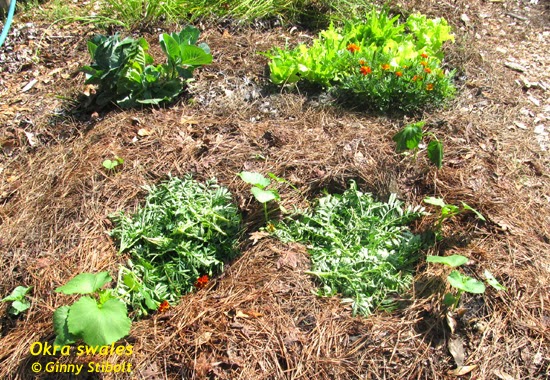A sweet onion harvest
 |
| The sweet Granex onion harvest was variable from 5 inches across to less than an inch. |
Last week (before the rains came) most of the
Granex onion leaves had fallen over, so it was time to harvest them and hang them to dry in the garage. Earlier this week I harvested the short-day onion sampler crop. I talked before about
rogue onions that bloomed instead of going dormant--most of the blooming onions came from the sampler crop, especially the purple ones. I made some more
rogue onion soup, but this time I used some leftover rice instead of potatoes and pureed it in the food processor. It still tasted great and was so good served cold on these warm days. I planted the onions last November, so it's a long growing season, but we go through a lot of onions, so it's worth the effort. Sweet!
 |  |
| Onions not suitable for drying included some blooming onions, ones without a enough leaf to hang by, and those that were too small to bother with. | I pureed the rogue onion soup this time. |
 |
| A hairy chickpea pod |
|
The cycle of crops continues with the sugar snap peas turning brown with the warmer weather, the third and last crop of leaf lettuces is beginning to bolt, the third and last crop of carrots is almost ready, and we are still enjoying our come-again broccoli and cabbages, but they'll begin to fade soon. The chickpeas and cucumbers are beginning to bear fruit. The butternut squash and zucchinis are coming along, too. Some of the okra plants have already set their first buds, so maybe we'll get a crop in a few weeks. I love our edibles--there is something new to enjoy every day.
 |  |
| Cucumber vines in a container and the chickpeas next door. | The Ashley cucumbers are fat. |
A Mother's Day (Re)Treat
My daughter proposed a meetup in central Florida for Mother's Day. I headed south and she headed north and we met at 8:30am in Frostproof, an historic town set between 2 large lakes. The plan was to hike in 2 preserves and then have lunch before heading back to our respective homes. She knows me well. What a great day.
 |
| Frostproof, Florida mural at the unlikely-sounding intersection of Wall St. and Scenic Hwy. |
 |
| Scrub morning-glory |
We met at the Frostproof library, left my car there, and headed out together to
Hickory Lake Scrub where there are 14 rare and endangered plants. Some are endemic only to the scrubs on the Lake Wales Ridge in the center of Florida's peninsula.
I learned a few new plants for me, including this beautiful scrub morning-glory with its soft pastel blue color. I also liked the Feay's palafox shrub--such beautiful flower heads. I could have spent more time there, because there is so much to see in a scrub if you just slow down to observe.
 |
| Feay's palafox (Palafoxia feayi), a Florida endemic shrub in the aster family with a beautiful flower head. |
 |
| Dori on the bank of the Peace River. |
Our second hiking spot was the Peace River Hammock, which was more heavily wooded and more mosquitoed, but still some interesting plants including this beautiful spring-run spiderlily. The Peace River has a pretty good current. It would be fun to float down it sometime.
After the 2 hikes, it was time for lunch. Dori had scoped out a cool 50's diner called Frostbite, where you can get "ice cream and more." I enjoyed my apple, pecan, & chicken salad; Dori liked her shrimp & chips; and then we did of course order ice cream sundaes. What fun.
 |
| A spider lily in the Peace River Hammock. |
I stopped on the way home to admire the cloud formations in the Ocala National Forest. A storm was on the way, but it didn't start raining until about the last 10 minutes of my drive.
 |
| Clouds outline the landscape in the Ocala National Forest, the 2nd largest forest in Florida. |
Do you know your snails?
 |  |
| Rosy wolf snails doing their thing on our sidewalk. | Another view of the snail sex. |
These rosy wolf snails (
Euglandina rosea) are predatory and will feed on slugs, other snails, worms, and other small critters in your gardens. You don't want to kill these helpful snails, so use caution in fighting plant-eating slugs and snails. After taking these photos, we gave them privacy so they could continue their procreation duties.
 |
| It runs in the family: my grandson Weber is majoring in chemistry and food science at University of Delaware. He'll be putting his education to good use at his summer job at a Delaware farm. |
 |
| Ooh, the Stoke's asters (Stokesia laevis) are attracting the native bees. |
|
Summer's upon us. Sustainable gardeners know to get out in the garden only in the early morning hours when it's cool enough to be comfortable.
Green Gardening Matters,Ginny Stibolt
























































